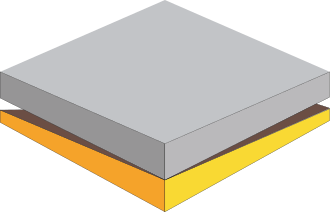Source code for pygeopressure.velocity.conversion
# -*- coding: utf-8 -*-
"""
Routines performing velocity type conversion
"""
from __future__ import (absolute_import, division, print_function,
unicode_literals)
from builtins import range
__author__ = "yuhao"
import numpy as np
from scipy import interpolate
[docs]def rms2int(twt, v_rms):
r"""
Convert rms velocity to interval velocity
Parameters
----------
twt : 1-d ndarray
input two-way-time array, in ms
rms : 1-d nadarray
rms velocity array, in m/s
Returns
-------
v_int : 1-d ndarray
interval velocity array with the same length of twt and rms
Notes
-----
This routine uses Dix equation to comput inverval velocity.
.. math:: V_{int}[i]^2 = \frac{V_{rms}[i]^2 t_{i} - V_{rms}[i-1]^2 \
t_{i-1}}{t_{i}-t_{i-1}}
twt and rms should be of the same length of more than 2.
Examples
--------
>>> a = np.arange(10)
>>> twt = np.arange(10)
>>> rms2int(twt, a)
array([ 0. , 1. , 2.64575131, 4.35889894,
6.08276253, 7.81024968, 9.53939201, 11.26942767,
13. , 14.73091986])
"""
v_int = np.ones((len(twt), ))
# v_int = np.copy(rms)
twt = twt*0.001
v_int[0] = v_rms[0]
v_int[1:] = np.sqrt(
(v_rms[1:]**2 * twt[1:] - v_rms[:-1]**2 * twt[:-1]) / \
(twt[1:] - twt[:-1])
)
# for i in range(1, v_rms.shape[0]):
# v_int[i] = np.sqrt(
# (v_rms[i]**2 * twt[i] - v_rms[i-1]**2 * twt[i-1]) / \
# (twt[i] - twt[i-1])
# )
return v_int
[docs]def int2rms(twt, v_int):
"""
Parameters
----------
twt : 1-d ndarray
v_int : 1-d ndarray
Returns
-------
v_rms : 1-d ndarray
"""
v_rms = np.ones((len(twt), ))
twt = twt*0.001
v_rms[0] = v_int[0]
# because of the accumulational effect of rms velocity, this func should
# not use vectorized notation
for i in range(1, v_int.shape[0]):
v_rms[i] = np.sqrt(
(v_int[i]**2 * (twt[i] - twt[i-1]) + v_rms[i-1]**2 * twt[i-1]) / twt[i]
)
return v_rms
[docs]def int2avg(twt, v_int):
r"""
Parameters
----------
twt : 1-d ndarray
v_int : 1-d ndarray
Returns
-------
v_avg : 1-d ndarray
Notes
-----
.. math:: V_{int}[i](t_{i} - t_{i-1}) = V_{avg}[i] t_{i} - \
V_{avg}[i-1] t_{i-1}
"""
v_avg = np.ones((len(twt), ))
twt = twt * 0.001
v_avg[0] = v_int[0]
for i in range(1, v_int.shape[0]):
v_avg[i] = (v_avg[i-1] * twt[i-1] + v_int[i] * (twt[i] - twt[i-1])) / \
twt[i]
return v_avg
[docs]def avg2int(twt, v_avg):
"""
Parameters
----------
twt : 1-d ndarray
v_avg : 1-d ndarray
Returns
-------
v_int : 1-d ndarray
"""
v_int = np.ones((len(twt), ))
twt = twt * 0.001
v_int[0] = v_avg[0]
v_int[1:] = (v_avg[1:]*twt[1:] - v_avg[:-1]*twt[:-1]) /\
(twt[1:] - twt[:-1])
return v_int
[docs]def twt2depth(twt, v_avg, prop_2_convert,
stepDepth=4, startDepth=None, endDepth=None):
"""
Parameters
----------
twt : 1-d ndarray
v_avg : 1-d ndarray
prop_2_convert: 1-d ndarray
stepDepth : scalar
startDpeth (optional): scalar
endDepth (optional): scalar
Returns
-------
newDepth : 1-d ndarray
new depth array
new_prop_2_convert : 1-d ndarray
average velocity in depth domain
"""
depth = np.ones((len(twt), ))
twt = twt * 0.001
depth = twt * v_avg / 2.0
startDepth = depth[0] if startDepth is None else startDepth
endDepth = depth[-1] if endDepth is None else endDepth
newDepth = np.arange(startDepth, endDepth+0.01, stepDepth)
f = interpolate.interp1d(depth, prop_2_convert, kind='cubic')
new_prop_2_convert = f(newDepth)
return (newDepth, new_prop_2_convert)
